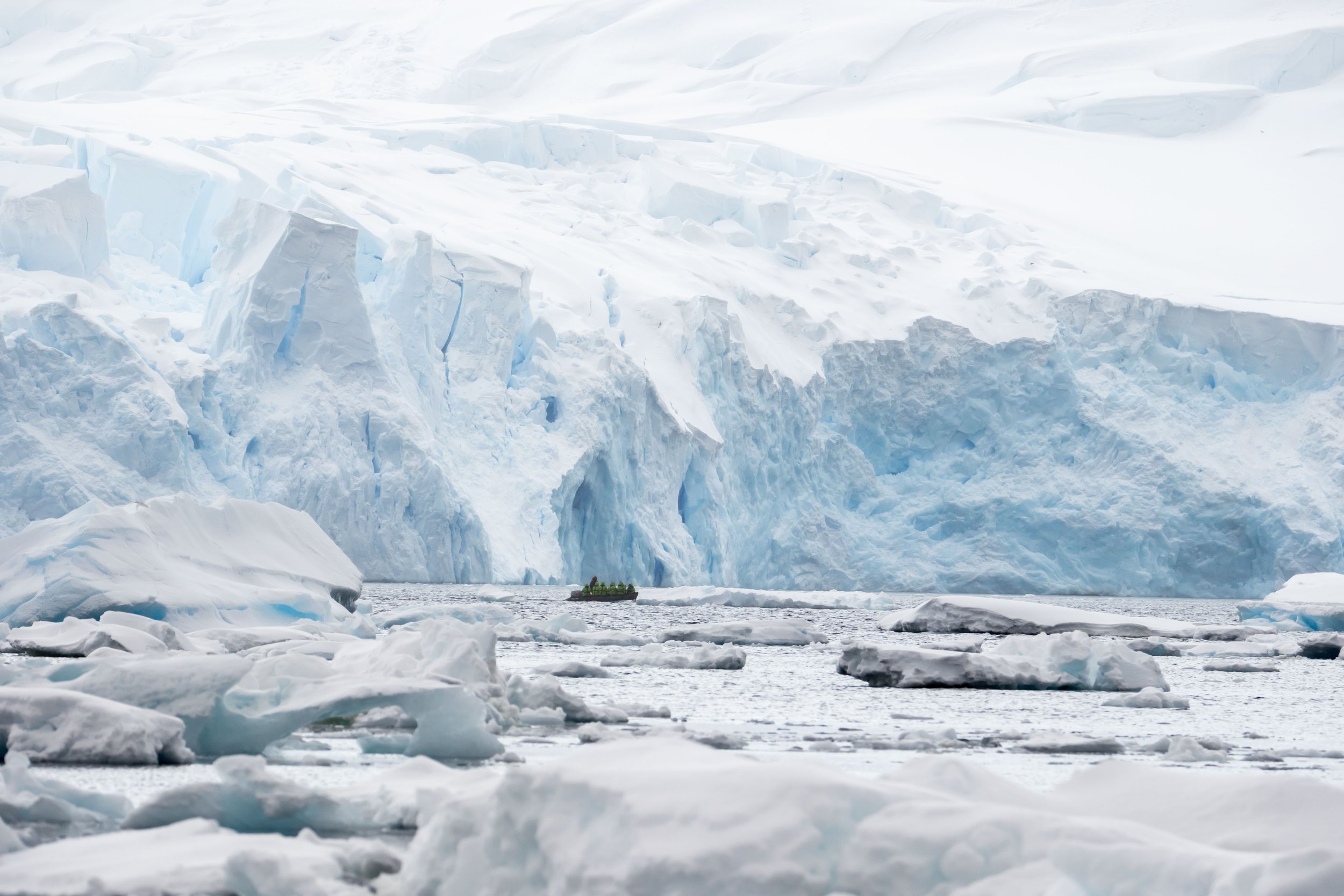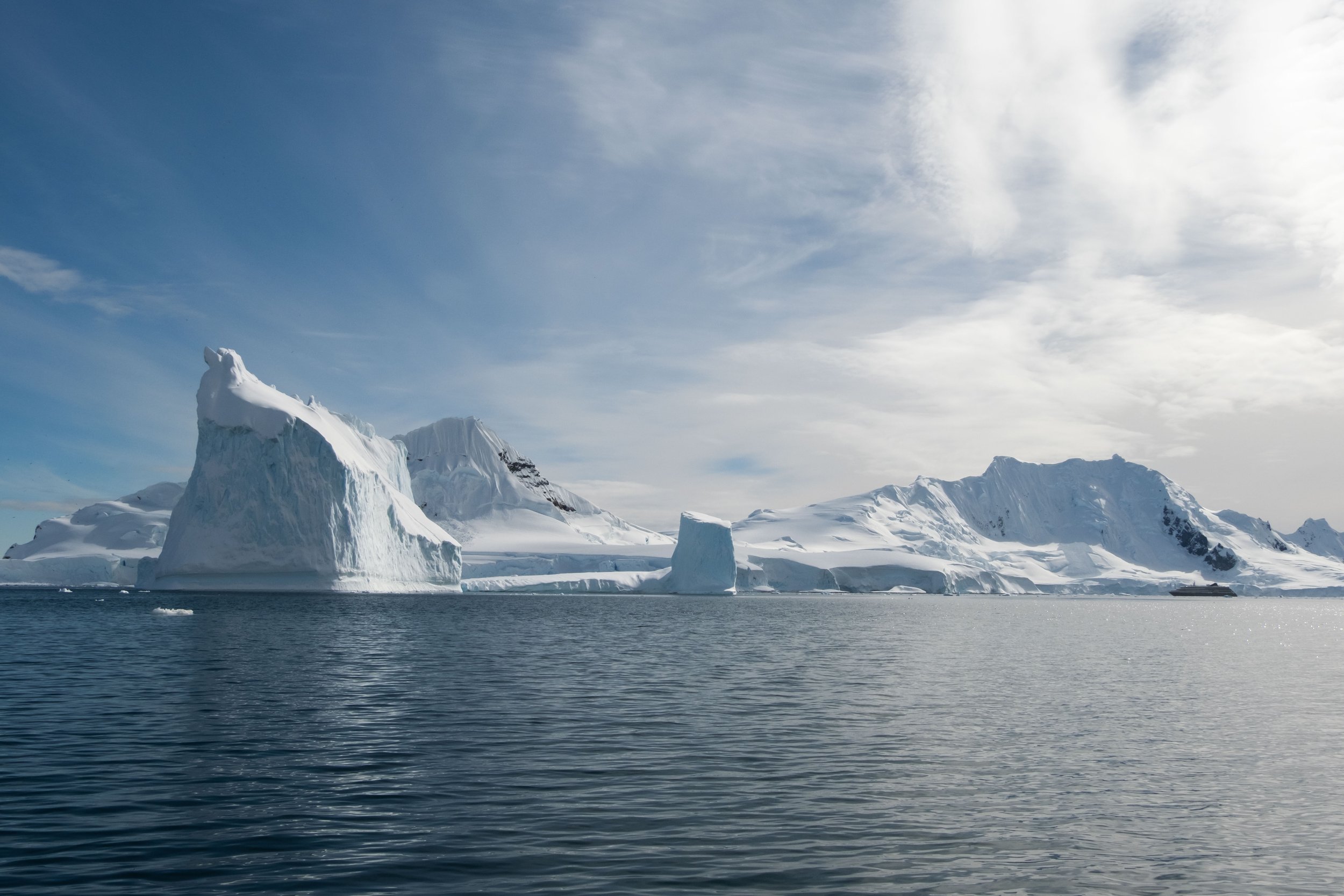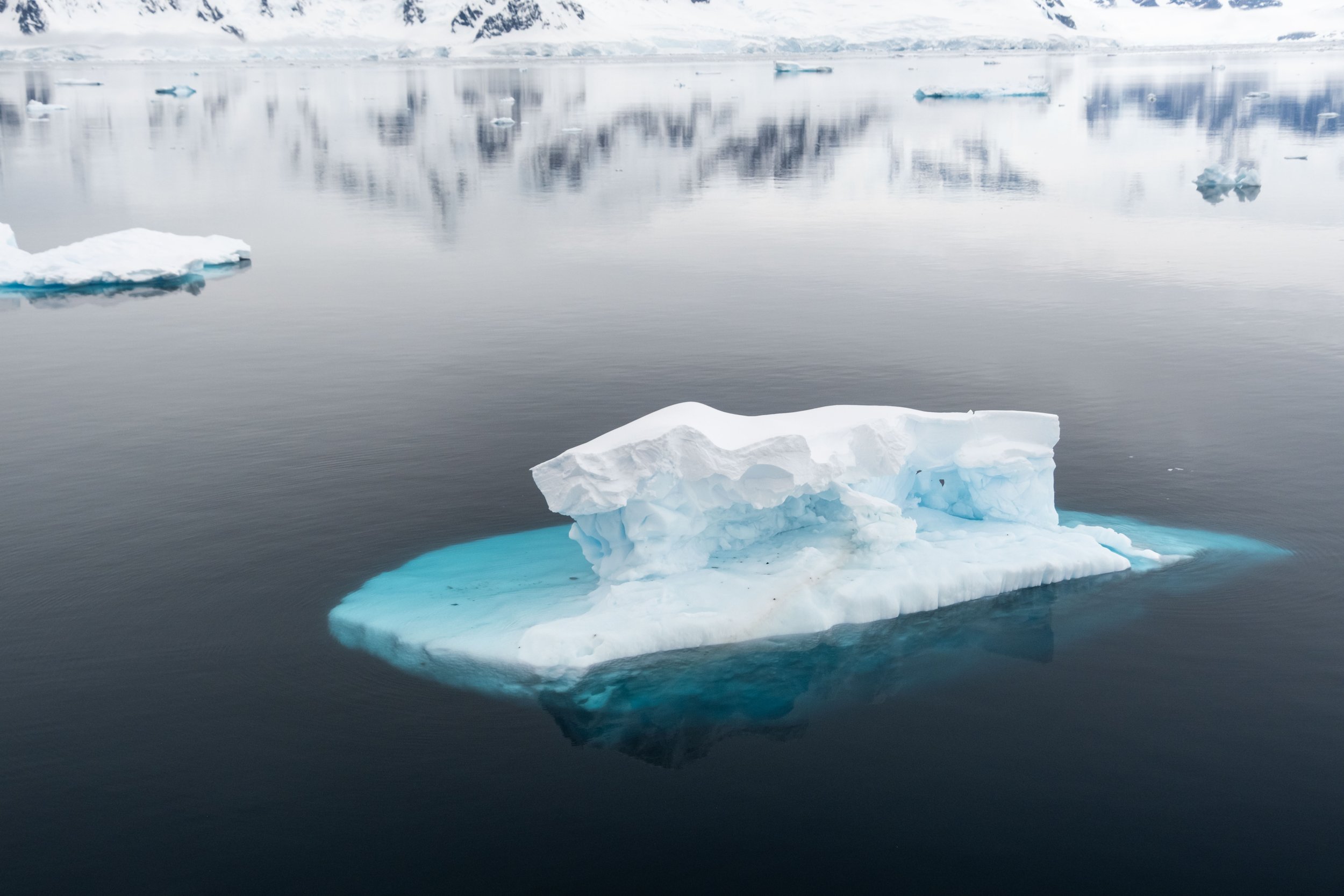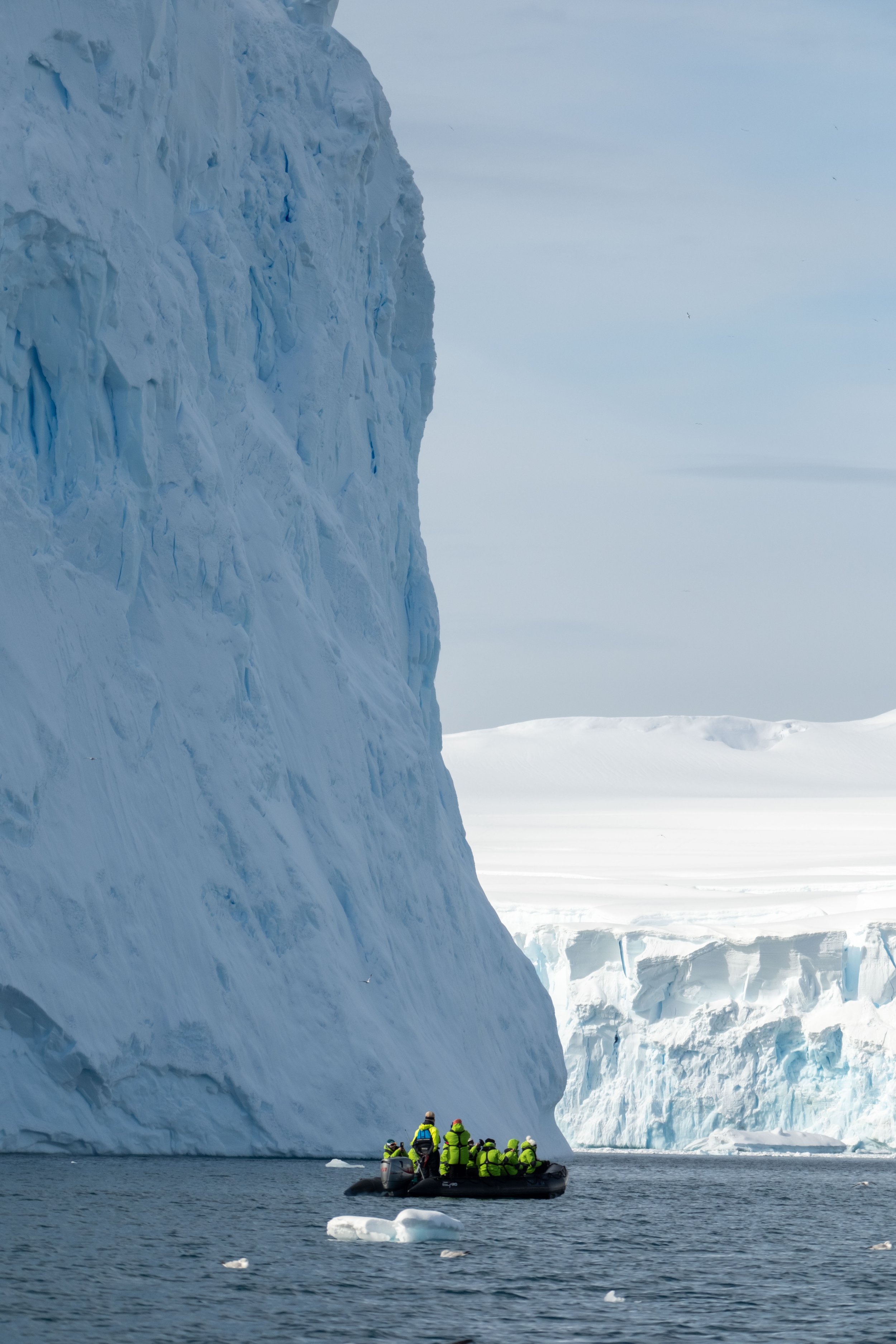My Once-in-a-Lifetime Expedition to Antarctica: A Solo Traveler's Adventure
This page contains affiliate links, and I may receive compensation if you click on a link. You can read my full advertising disclosure here. Terms apply to American Express benefits and offers. Enrollment may be required for select American Express benefits and offers. Visit americanexpress.com to learn more.
The Unforgettable Beauty of Antarctica
Nothing truly prepares you for the breathtaking beauty of Antarctica. The icebergs are a mesmerizing shade of blue, their formations resembling nature’s artwork. I’ve seen glaciers before, but none so vast and brilliant—watching them calve into the sea, leaving behind shards of dazzling blue ice, was awe-inspiring. The landscape is otherworldly, making you feel small and insignificant in the best way possible.
And then, there are the penguins—you can’t forget the penguins. Cute, curious, and living their best lives, they waddle across the ice and dive into the sea with effortless grace. To them, we visitors in our brightly colored parkas are just another part of the scenery, but for us, it was pure magic.
How I Made My Antarctica Dream a Reality
Visiting all seven continents has always been a lifelong dream of mine, but reaching Antarctica felt like the biggest challenge. Then I discovered @ClaireandPeter on Instagram, who inspired me to connect with @FreestyleAdventures. Their team of expert travel advisors made the seemingly impossible a reality, and I cannot recommend them highly enough.
As a solo traveler, cost was my biggest hurdle. I wasn’t willing to share a cabin with a stranger, so I paid the dreaded solo supplement—typically 150% (or more) of the per-person cost on cruises. While I can’t disclose my exact deal, let’s say it was an expensive but worthwhile investment in a once-in-a-lifetime experience.
Travel Hack: Use Points and Miles to Offset Costs
Antarctica isn’t just a dream destination—it’s an expensive one. If ever there was a time to maximize travel rewards, this was it. Paying for this trip helped me hit the spending requirements for new credit card bonuses, which meant I earned enough miles to cover my flights to Buenos Aires. If you're planning an expedition to Antarctica, leveraging points and miles can make a real difference in offsetting costs.
Buenos Aires to Ushuaia: The Gateway to Antarctica
Our journey began in Buenos Aires, where we stayed for a night before flying to Ushuaia, the southernmost city in the world.
Some passengers arrived in Buenos Aires early to explore, and if I had more time, I would have, too! I highly recommend visiting Iguazu Falls, the largest waterfall in the world, which stretches nearly 3km between Argentina and Brazil. Another must-do is Colonia del Sacramento, a charming historic town in Uruguay, just a short ferry ride away. If you love photography and history, it’s worth the trip!
Upon arrival in Ushuaia, we were whisked away on a tour of Tierra del Fuego National Park, a stunning landscape of mountains, forests, and the sea. A highlight was the quirky little post office by the Beagle Channel—though it was closed when we arrived, as the postman apparently keeps his own schedule!
Looking back, I would have preferred to skip the tour and spend more time exploring Ushuaia at my own pace. However, the excitement among passengers was undeniable—we were all buzzing with anticipation, knowing we were about to embark on the adventure of a lifetime.
Ushuaia Harbor
Boarding the Ship
From the park, we were taken directly to the World Traveller, where embarkation was seamless. And anything that starts with a glass of bubbles is fine by me!
The Atlas Ocean Voyages World Traveller: Ship, Cabin & Dining
Stepping aboard the World Traveller felt like entering a boutique hotel at sea—intimate, stylish, and built for explorers like me. The ship is the newest addition to the Atlas Ocean Voyages fleet, which currently has just three ships, with two more on the way. With a crew-to-passenger ratio of nearly 1:1, service was impeccable.
I initially had a cozy stateroom on Deck 3, but after one night, I was surprised with an upgrade to Deck 6—complete with a window that opened! That fresh Antarctic air was an unexpected luxury I didn’t even know I needed.
The food onboard was impressive, with breakfast and lunch served buffet-style and dinner as a plated, sit-down affair. While the dining experience was beautifully done, it was a bit slow for my style. Luckily, Paula’s Bakery—open from 6:30 a.m. to 6:30 p.m.—offered fresh sandwiches, smoothies, coffee, and even ginger shots. It became my go-to spot for a quick bite.
The ship provided 1GB of free internet per passenger, with optional data packages available for purchase. Since I wanted to share my experiences in real time, I opted for a seven-day package for $179, which covered most of my trip.
Understanding Antarctica vs. The Arctic
A common misconception is that Antarctica and the Arctic are similar, but they are vastly different. For starters, penguins are only found in Antarctica, while polar bears exist only in the Arctic. Antarctica is a continent covered by ice, whereas the Arctic is an ocean surrounded by land. Unlike the Arctic, Antarctica has no Indigenous population and is far colder, making it one of the most extreme environments on Earth.
When to Visit Antarctica
Choosing the right time to visit Antarctica makes all the difference. November to early December offers pristine snow, nesting penguins, and towering ice formations. By January to March, penguin chicks have hatched, whale sightings peak and the ice has started to melt, making certain areas more accessible. If you want untouched landscapes, go early; if you want more wildlife interactions, go later. Either way, Antarctica will take your breath away.
An interesting note about Antarctica: Since it spans 10 time zones but has no permanent residents, research stations and ships typically follow the time zones of their home countries or departure ports. Our ship stayed on Ushuaia time, which made things simpler—especially since my phone never adjusted!
Crossing the Drake Passage: The Ultimate Rite of Passage
To reach Antarctica, you must cross the Drake Passage, one of the roughest seas in the world. Known for either the Drake Lake (calm seas) or the Drake Shake (rough waters), we were fortunate to experience relatively smooth sailing on the way down.
The return trip, however, was another story. We encountered 5-8 meter (16-26 feet) waves, and my cabin, located at the stern of the ship, felt every single one of them. At one point, I woke up to the sound of things crashing around, including items from the minibar. I shared a Drake Passage Instagram Reel, capturing the experience for those curious about what it’s really like to sail through these legendary waters. For the record, the crew still referred to the return as relatively calm.
Excursions and Flexibility in Antarctica
One of the most unforgettable moments of the trip was stepping onto my 7th continent. It was a dream decades in the making, and the moment my boots touched Antarctic ground, I was overwhelmed with excitement and gratitude. Standing in this vast, untouched wilderness, I realized just how special this experience was—something so few people in the world get to do.
My 7th continent (please forgive the upside down flag) - with a few friends.
Each day in Antarctica consisted of two excursions—one in the morning and one in the afternoon, all dependent on weather and ice conditions. Flexibility was key, as our itinerary could change at any moment.
We visited Yankee Harbor, Half Moon Island, Whalers Bay on Deception Island, Curtiss Bay, Cierva Cove, Enterprise Island, Portal Point, Neko Harbor, Wilhelmina Bay, Danco Island, and Harry Island—each offering stunning landscapes, massive glaciers, and incredible wildlife. We saw Gentoo and Chinstrap penguins, Weddell seals, humpback whales, and even got close enough to touch icebergs.
The Polar Plunge
With air temperatures at -4°C (24°F) and water at 0°C (32°F), jumping into the freezing Antarctic waters was a rush like no other. About 100 passengers participated, each harnessed for safety. As soon as I hit the water, the cold was shocking—but the shot of tequila afterward made it all worth it!
Kayaking in Antarctica
This optional excursion cost $200, and it was worth every penny. Paddling through pristine waters with penguins darting around and towering icebergs in the distance was surreal. I was paired with an expedition crew member, making the experience feel even more special.
Walking on Floating Ice
One of the most surreal moments of the trip was walking on floating ice. Standing on 1 meter (3.3 feet) of snow on top of 1 meter of ice—floating above 457 meters (1,500 feet) of ocean—was both thrilling and humbling. Knowing that beneath me was nothing but freezing, inky-black water made it even more bizarre. It was one of those once-in-a-lifetime experiences where you realize just how small you are in the vastness of nature’s power.
Camping on Antarctica: The Adventure I Wish I'd Done
One experience I skipped—but now wish I had done—was camping on Antarctica. This involves digging a hole in the snow and spending a night on the continent under the stars, bundled in a sleeping bag. At $750, I thought it was too expensive at the time, but those who did it said it was an unforgettable experience, especially waking up to curious penguins checking them out. If I go back, I’d 100% do it.
Crossing the Antarctic Circle: The Journey That Almost Was
Our expedition was marketed as an Antarctic Circle crossing, aiming to pass 66 degrees 33' south, the official boundary of the Antarctic Circle. However, due to the sheer amount of ice, we were unable to make it past 64 degrees south. While it was slightly disappointing, it was also a reminder of how unpredictable and powerful Antarctica is. The ice dictates where you can and can’t go, and flexibility is essential when traveling to the White Continent.
The People Who Made This Journey Special
One of the most unexpected joys of this trip was the people I met on board. While over 50% of the passengers were 50 or older, the group was diverse in experiences, backgrounds, and travel stories. Conversations at the coffee bar often turned into hour-long discussions about the places we had been and the bucket-list adventures still ahead.
We bonded over incredible shared experiences, like stepping onto Antarctica for the first time, watching penguins waddle past us, or bracing ourselves for the Drake Passage’s wild ride.
There was an unspoken connection—one that comes from experiencing something so extraordinary together. These weren’t just fellow passengers; they were kindred spirits, people who understood what it meant to crave adventure, to chase the unknown, and to fully embrace the magic of the moment.







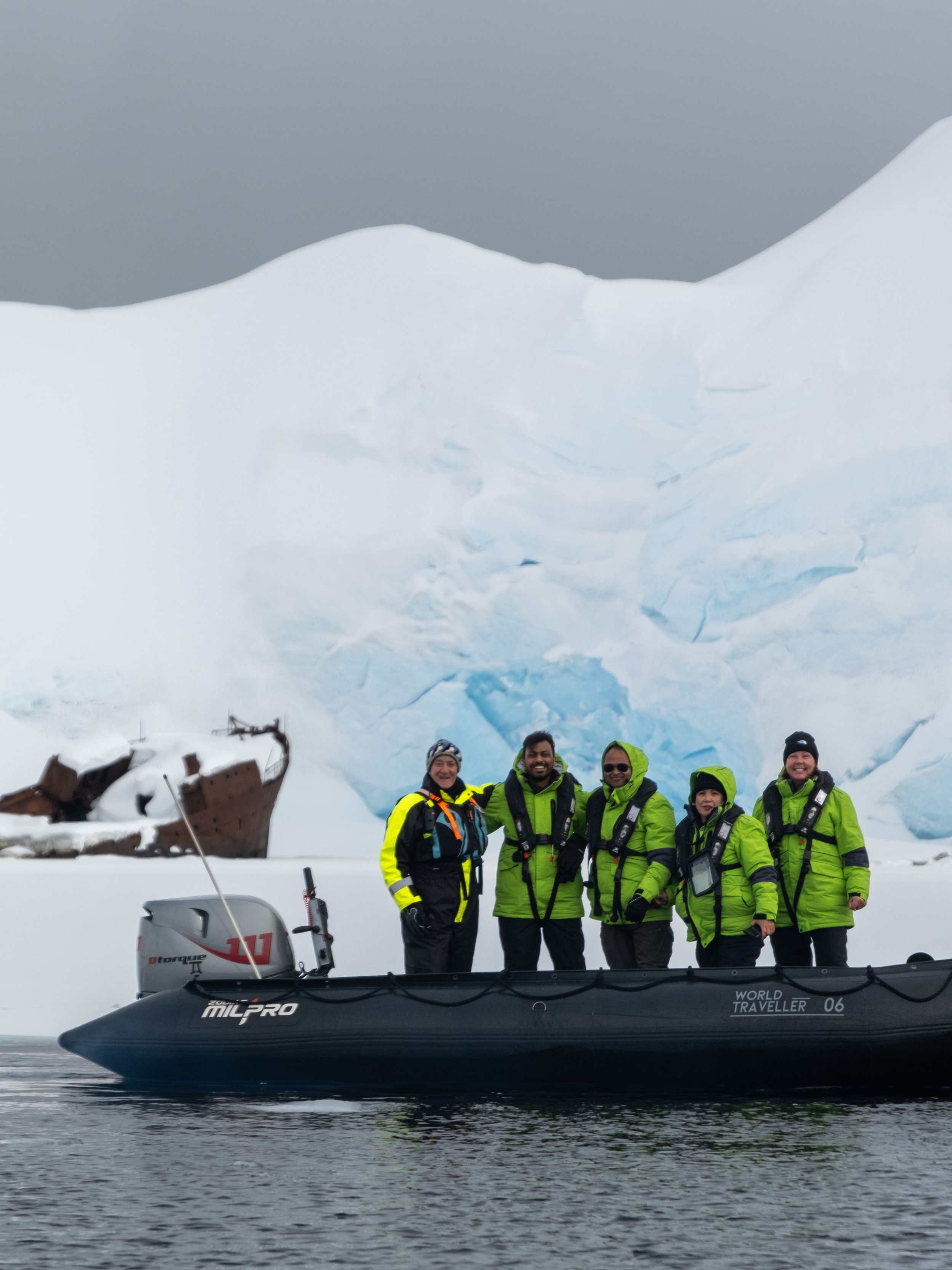
The End of an Unforgettable Journey
As our ship sailed back to Ushuaia, I watched the expedition team’s final debriefing with tears streaming down my face. Antarctica changes you in ways you don’t expect. It’s breathtakingly beautiful, quiet, and pristine—a place where time feels irrelevant, and every moment is a gift.
If visiting Antarctica has ever been a dream of yours—do it. Find a way, make it happen. Because once you set foot on the White Continent, you’ll understand: once is never enough.



